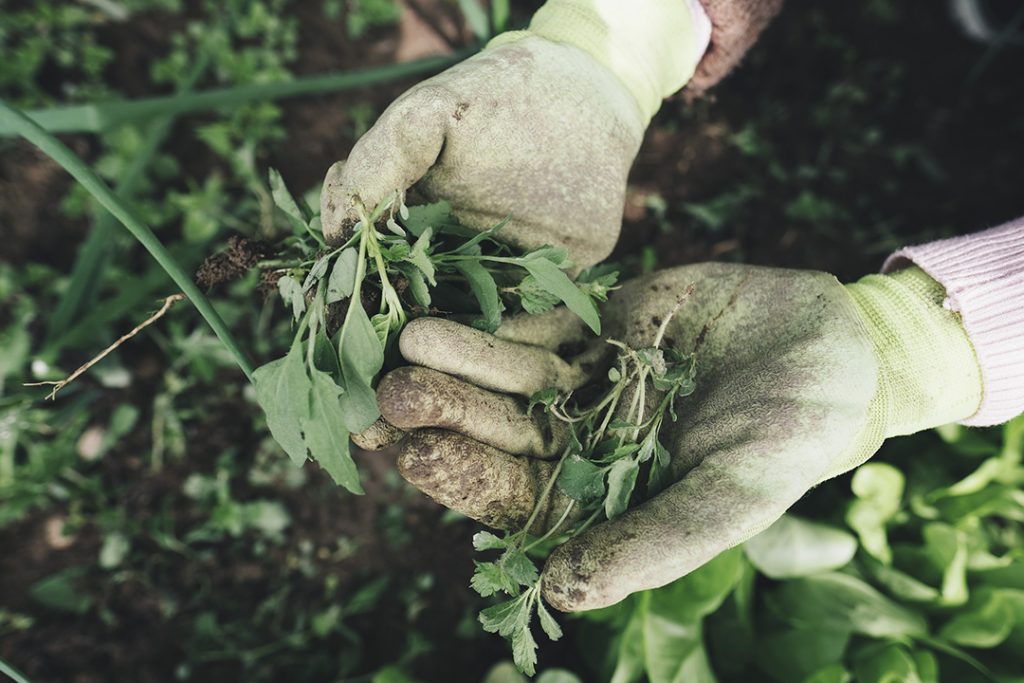
Weeds can be ugly, but sometimes their ugliest characteristic is persistence. Processing tomato growers and rice farmers recently have had to battle this feature in two menacing weed enemies.
For rice farmers in the Sacramento Valley, naming the recurring weed species has been straightforward, no hard-to-spell scientific designation. “Weedy rice” is the culprit. It mimics the rice plant and likes to display its vigorous growth characteristic amidst established fields of rice plants. So disguised and embedded, it eludes mechanical or chemical weed control, requiring it to be pulled out of the ground by hand.
With California agriculture on the threshold of some remarkable technology, grubbing weedy rice by hand is out of character, as well as being slow, inefficient and costly. So rice growers, with the help of experts and researchers with the University of California’s Cooperative Extension Service, began 20 years ago to establish procedures to exclude the weed from the 550,000 acres of rice grown in California, the country’s second largest rice-producing state.
But, the rascally weed persists, in spite of a rigid and closely followed practice of planting only rice that has been certified as free from such outlaw seeds. Burning rice stubble in the fields after harvest helps, but the practice that used to envelop the state capitol in weeks-long smoke is tightly controlled now and not as flexible for use by growers.
The weed has been traced to 1917, and was probably present earlier, when a concerted effort began to control and hopefully eliminate it. In 1980, a university researcher wrote that the weed could no longer be found, but 23 years later it was reported in a field in Glenn County. Three years after that, six fields in Glenn and Colusa Counties were reported as weedy, and by 2016, five biotypes of the weed had spread to several thousand acres of Northern California rice fields.
The industry, university researchers, and organizations of growers and sellers are focusing on prevention and control measures, according to a recent article in the respected farm publication Western Farm Press. Other rice growing states, also troubled by the persistent weed, are watching the California rice industry’s battle against the biological intruder.
Those who grow and handle (usually bottle) the 11.9 million tons of processing tomatoes the state produces, have targeted an invasive weed with an ugly name – branched broomrape. It has made an invasive appearance after it was thought to be eliminated 40 years ago.
So destructive that quarantine regulations require growers to disc under any crop where it is found, a grower is encouraged to rotate out of any crops that might host it. The California Department of Food & Agriculture oversees a zero-tolerance quarantine strategy against the weed.
Its recent detection in isolated fields in Yolo, Solano and San Joaquin Counties was reported by respected journalist Bob Johnson in an article in the Aug. 7 issue of Ag Alert, the weekly farm publication published by the California Farm Bureau. He found that the California Tomato Research Institute spent more than $1.5 million in a 10-year effort to achieve eradication of the pest, beginning in 1973. But, the weed persists.
A team of researchers is exploring different means of eradicating branched broomrape. As part of that process, the members are learning if tomato plants can grow through low levels of the various herbicides they want to try experimentally. If plants can withstand the herbicides, the researchers hope they can be applied through irrigation systems, like the one used in trials at the Davis campus.
These two treacherous weeds in rice and processing tomato fields remind us that weed cultures are tough to deal with – even foxtails, mare’s tails, or a half dozen different types of spurge, which might be growing right now in your neighbor’s backyard, and tomorrow in yours.









